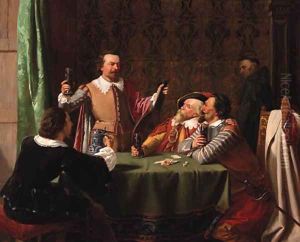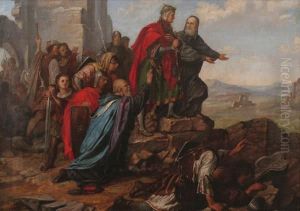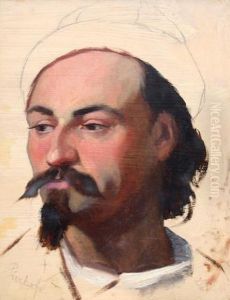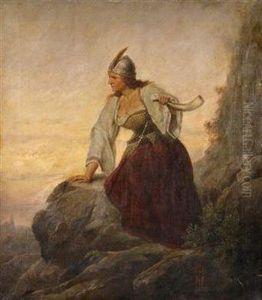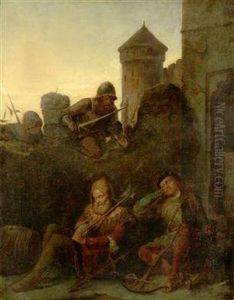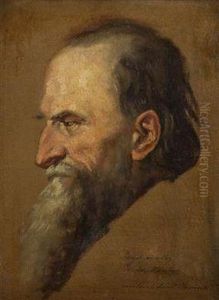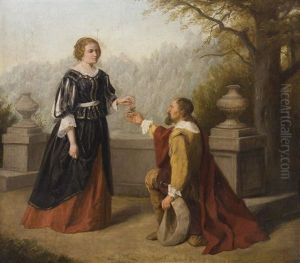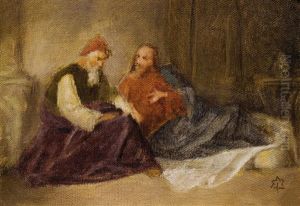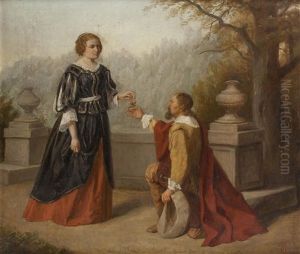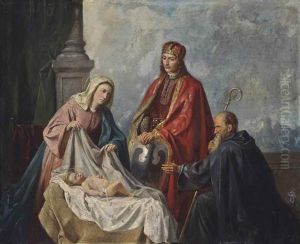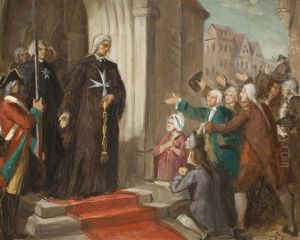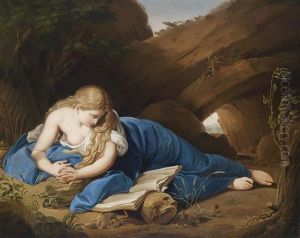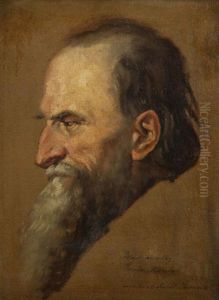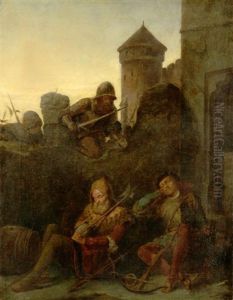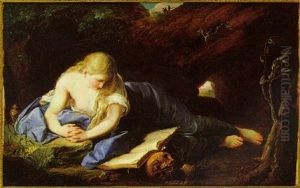Karel Javurek Paintings
Karel Javůrek was a notable Czech painter, recognized for his contributions to 19th-century European art, particularly within the Romantic movement. Born on July 20, 1815, in Písek, Bohemia, then part of the Austrian Empire, Javůrek developed an interest in art at an early age. He initially received his artistic training at the Academy of Fine Arts in Prague under the tutelage of Christian Ruben, a painter who emphasized the classical approach to art.
Javůrek's early career was marked by the influence of the Romantic movement, which was characterized by an emphasis on emotion, individualism, and the glorification of nature. He was particularly known for his historical paintings and his ability to capture the spirit of Czech nationalism, which was burgeoning during the 19th century as various European ethnic groups sought cultural and political autonomy.
One of Javůrek's most recognized works is 'The Hussite Preacher Jan Žižka,' which reflects his interest in Czech history and the Hussite wars, a series of conflicts driven by religious and civil issues in the 15th century. His historical paintings often depicted pivotal moments and figures from Bohemian history, imbuing them with a sense of drama and heroism that resonated with the nationalistic sentiments of his contemporaries.
Apart from historical scenes, Javůrek also painted portraits, landscapes, and genre scenes, showcasing his versatility as an artist. Throughout his career, he exhibited his works in various cities, including Prague and Vienna, gaining acclaim and recognition for his contributions to Czech art.
Javůrek's legacy extends beyond his paintings, as he played a role in the development of the Czech artistic community. He was a member of various art organizations and contributed to the cultural life of Prague. Karel Javůrek passed away on January 24, 1909, leaving behind a body of work that continues to be celebrated for its historical significance and artistic merit. His paintings are held in numerous collections, including the National Gallery in Prague, where they serve as a testament to his skill and his passion for Czech history and culture.
